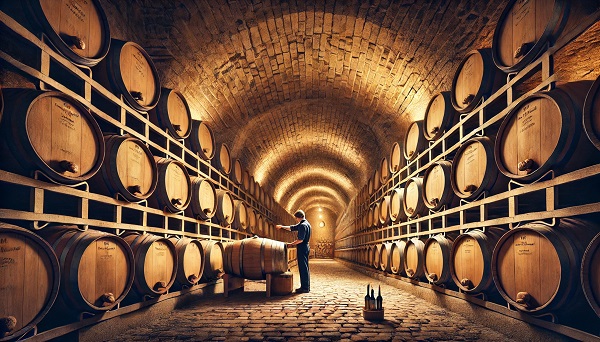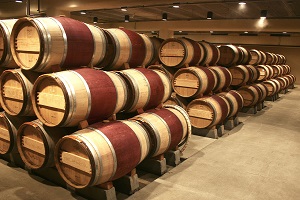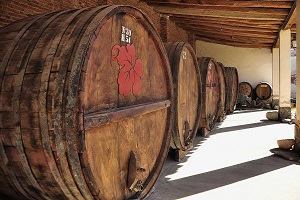Factors Influencing the Style and Quality of Wine
Oak Maturation

Oak Maturation can play a crucial role in shaping the style and quality of wine.
Oak Maturation
Many quality wines are matured in oak vessels to add complexity, flavor, and texture. Extended oak aging is often associated with higher-priced wines due to the cost of barrels and the investment in time.
Oak vessels can impart various flavors, aromas, and textures to the wine. Different types of oak (French, American, Hungarian) and characteristics (toast level, barrel age, barrel size) influence the style and quality of the wine.
In oak vessels, the wine undergoes a controlled Oxygenation and absorb oak compounds an flavors like smoke, vanilla, toast, and spices, as well as the oak enhance the complexity and structure of the wine.
Vessel Size
Oak vessels used in winemaking come in various sizes, each with its own name and specific use.
The size of the barrels plays a vital part. Small barrels have stronger effect than large barrels.
Small Barrels (Barrique, Pièce) impart significant oak influence. This is ideal for wines where the winemaker wants noticeable oak flavors and aromas.
Medium-Sized Barrels (Puncheon, Demi-Muid, Butt) provide a balance between oak influence and the natural expression of the wine. This is suitable for wines with longer aging periods or those requiring subtle oak integration.
Large Vats (Foudre, Botti) impart minimal oak flavor, focusing on long aging, gentle oxidation, and preserving the wine’s varietal character and terroir.
Each vessel size influences the wine in different ways, with smaller barrels typically imparting more oak influence and larger vessels allowing for more subtle interactions between the wine and oxygen, creating complexity without overwhelming the wine’s natural qualities.
Barrel Age
The age of the barrels plays a vital part. Absorption is highest in new barrels and much less in used barrels.
Many famous Bordeaux and Burgundy wines are matured in new barrels. Sometimes these wines can be over-oaked. Many producers prefer to work with a mix of new and old barrels.
Toasting Level
Heavy toasted barrels have stronger effect than light toasted barrels.

Light Toast: More delicate, bready, and vanilla notes.
Medium Toast: Balances sweet spices, caramel, and toast.
Heavy Toast: Intense flavors like smoke, char, coffee, and chocolate.
Sur Lie Aging
Sur Lie is French for On the Lees.
Sur lie aging is a winemaking technique where wine is aged on its lees.
Lees can be defined as dead yeast cells and other sediment left over from the fermentation.
Sur lie aging affects the texture, flavor, and complexity of the wine.
In general, sur lie aging is more impactful in white wines due to their lighter structure and lower tannin levels. It is very common when producing Champagne and high quality Chardonnay, Muscadet and some Sauvignon Blancs.
Champagne must spend minimum 12 months on its lees.
Vintage Champagne must spend minimum 3 years.
Muscadet Sur Lie, (from Melon de Bourgogne grapes in Loire) rests on the lies for 6 months.
Chardonnays from Burgundy and California are also often aged on their lees.
Red wines often rely more on oak aging and skin contact for complexity. However, some Pinot Noir and Syrah producers use sur lie aging to develop softer, richer textures.
Effects
- Adds texture and richness, giving the wine a creamier mouthfeel.
- Enhances aromas and flavors, contributing notes of bread, brioche, nuts, and yeast.
- Increases complexity by introducing subtle oxidative notes.
- Helps preserve freshness due to the release of antioxidants from yeast cells.
Bâtonnage
Bâtonnage is a winemaking technique that involves stirring the lees (dead yeast cells and other sediment) that settle at the bottom of a wine barrel or tank during the aging process.
It is commonly used in white winemaking, particularly for Chardonnay, to enhance texture, complexity, and body.
Bâtonnage is an important tool for quality winemakers, almost like a spice rack to a chef.
Stirring of the lees–yeast cells that fall to the bottom of the oak barrel–varies in length and frequency every vintage, depending on the complexity of the aromas and flavors of the newly press juice. It could be as short as two stirs of the lees total or as long as six weeks of stirring–usually one stir per week. Employing batonnage in winemaking helps to balance the wine. By keeping the yeast cells in contact with the chardonnay while it ages in French oak barrels–and stirring those lees–we can give the mouthfeel of Jordan Chardonnay a hint of creaminess we desire. But it’s a delicate balancing act: You don’t want to stir the lees too much, or the wine will lose its bright fruit flavors, and that’s the most important attribute in Jordan’s French-inspired style of chardonnay.Batonnage and sur lie aging go hand in hand. A winemaker must have lees in the wine barrel to stir, which means that the wine must age on its lees.
How Bâtonnage Works
After fermentation, wines are left on the lees (known as sur lie aging).
The lees naturally settle at the bottom of the barrel or tank and the winemaker periodically stirs the wine using a rod, known as a "bâton" (French for "stick").
Stirring suspends the lees back into the wine, which impacts the flavor, aroma, and texture.
Some winemakers stir the lees daily for a rich, buttery texture (common in New World styles). Others may stir weekly or monthly for a more subtle effect.
Minimal or no bâtonnage is used when a crisper, more mineral-driven style is desired.
Bâtonnage Effects
Stirring releases mannoproteins and polysaccharides from the yeast cells, which add creaminess and a richer mouthfeel. It can give nutty, toasty, and brioche-like notes, often associated with Burgundy-style Chardonnay.
The presence of lees can help protect the wine from excessive oxygen exposure, and bâtonnage also prevents sulfur-related off-aromas (like rotten eggs or burnt rubber) that can form in a reductive environment.
Bâtonnage is an important tool in winemaking that can dramatically shape the final texture and flavor of a wine, making it richer, rounder, and more complex.Examples of Wines Using Bâtonnage
- Burgundy Chardonnay (Meursault, Puligny-Montrachet)
- California Chardonnay (Napa & Sonoma)
- Viognier & other fuller-bodied whites
Comparison with Other Techniques
Sur Lie Aging: Bâtonnage is often combined with sur lie aging, where wine remains on the lees for months or years.
Malolactic Fermentation (MLF): Often paired with bâtonnage to enhance the creamy, buttery mouthfeel.
Oak Barrel Aging: When bâtonnage is done in oak barrels, it enhances the integration of oak-derived flavors like vanilla, toast, and spice.

